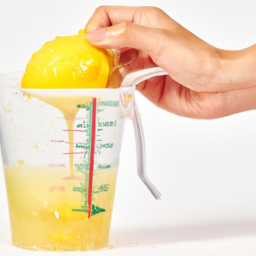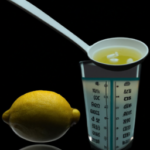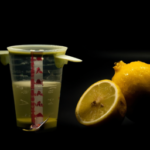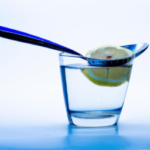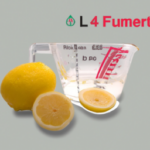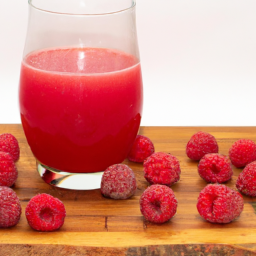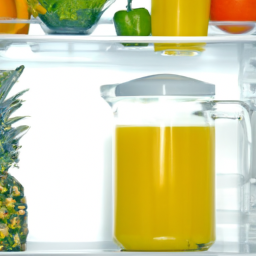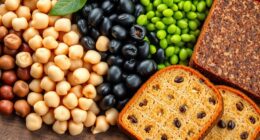Lemons are often overlooked in cooking but they bring a refreshing burst of flavor to many dishes. As someone who loves to cook, I understand the importance of getting the right amount of lemon juice in a recipe. However, squeezing juice from lemons can be a tedious task and it can be difficult to know how much juice one lemon will give.
That’s why I’m here to help you navigate the world of lemon juice and give you the precise measurements you need to create the perfect lemon-infused dish. Believe it or not, getting the right amount of lemon juice can make or break a recipe. Too little, and you’ll miss out on that bright, tangy flavor that makes lemon so special. Too much, and you’ll overpower your dish with sourness.
That’s why it’s critical to measure lemon juice accurately, taking into account factors like the ripeness of your lemon and the method you use to extract the juice. In this article, I’ll give you all the information you need to measure lemon juice like a pro, so you can enjoy all the benefits of this versatile citrus fruit in your cooking.
Key Takeaways
- One lemon typically yields around 2-3 tablespoons of juice, but this can vary depending on the size and ripeness of the lemon.
- Accurate measuring of lemon juice is crucial for achieving the desired taste and acidity in dishes.
- Bottled lemon juice can be used as a substitute for fresh lemon juice, but it’s important to check the label to ensure it’s 100% lemon juice.
- Leftover lemon juice can be preserved by freezing in an ice cube tray or storing in an airtight container in the fridge, and can be used in a variety of dishes and recipes.
The Importance of Measuring Lemon Juice Accurately
You don’t want to mess up your recipe by eyeballing it – that’s why it’s crucial to measure lemon juice accurately! The importance of measuring lemon juice accurately cannot be overstated.
Fresh lemons are a great source of vitamin C and other nutrients. Adding lemon juice to water can also provide additional benefits, such as aiding in digestion and promoting hydration. However, adding too much or too little lemon juice can greatly affect the taste and texture of your dish or drink.
To ensure that you are adding the correct amount of lemon juice, it is important to measure it accurately. This can be done by using a measuring cup or spoon. If a recipe calls for the juice of one lemon, it is best to use one fresh lemon. However, factors such as the size and ripeness of the lemon can affect the amount of juice it yields.
Now let’s discuss some factors that can affect the yield of lemon juice.
Factors That Affect Lemon Juice Yield
When squeezing a fresh lemon, the amount of liquid extracted can be influenced by various factors. These include the ripeness of the lemon, the temperature of the lemon, the juicing method used, and the pressure applied when squeezing.
For instance, a ripe lemon will yield more juice than an unripe one. Similarly, a warm lemon will produce more juice than a cold one, while using a juicer will result in a higher juice extraction compared to squeezing by hand. Lastly, applying too much pressure when squeezing can produce a bitter taste from the lemon peel.
Another important factor that affects lemon juice yield is the freshness of the lemon. This is because the longer a lemon sits, the drier it becomes, and the less juice it will yield. As a result, it’s best to use fresh lemons when making lemon juice to ensure maximum juice extraction.
Additionally, it’s important to note that the amount of juice that can be extracted from one lemon may vary depending on the factors mentioned above. Therefore, it’s crucial to measure the juice accurately when using it in recipes.
Measuring Lemon Juice for Recipes
Precise portioning of tangy citrus is pivotal in preparing palatable recipes. When it comes to lemon juice, measuring accuracy is important to ensure that the taste and acidity level are just right.
One lemon typically yields around 2-3 tablespoons of juice, but this can vary depending on the size and ripeness of the fruit. To measure the juice, I usually cut the lemon in half and use a citrus reamer or juicer to extract the juice. I then pour the juice through a fine mesh strainer to remove any pulp or seeds, and measure out the desired amount for my recipe.
However, if you don’t have a fresh lemon on hand, there are some lemon juice substitutions that you can use. Bottled lemon juice can be used as a substitute, but be sure to check the label to ensure it is 100% lemon juice and not a blend with other citrus juices.
Another option is to use vinegar or another acidic ingredient such as lime juice or white wine vinegar, but this will alter the flavor of the recipe. Overall, measuring lemon juice accurately is key to achieving the desired taste in your dishes.
When it comes to extracting more juice from lemons, there are some tips and tricks that can be helpful. One method is to roll the lemon on a hard surface before cutting it in half, which can help break down the membranes and release more juice. Another technique is to microwave the lemon for 10-15 seconds before juicing, which can also help release more juice.
Additionally, using a juicer or citrus reamer can be more effective than squeezing the lemon by hand. With these tips in mind, you’ll be able to maximize the amount of juice you get from each lemon.
Tips for Extracting More Juice
When I need to extract more juice from a lemon, I’ve found that a few simple techniques can make a big difference.
First, I like to roll the lemon on a hard surface before cutting it open. This helps to break down the fibers inside and make the juice flow more easily.
Second, I sometimes warm the lemon in the microwave for a few seconds to further soften it up.
Finally, I use a fork to press and twist the lemon halves as I squeeze them, which helps to release even more juice.
Rolling the Lemon
First, you’ll want to roll the lemon on a hard surface to help release the juices before squeezing it. This rolling technique is essential, especially when using lemons that have been sitting for a while. Rolling the lemon helps break down the pulp and fibers inside, allowing the juice to flow more freely and easily.
Here are some tips to help you roll your lemon like a pro:
- Start by applying some pressure on the lemon with the palm of your hand.
- Roll the lemon back and forth with gentle force.
- Apply more pressure to the lemon while rolling it to ensure that all parts of the lemon are being worked on.
- If the lemon is giving you a hard time, try microwaving it for a few seconds to soften it up before rolling.
- Be careful not to roll too hard, as this could cause the lemon to burst open and lose some of its juice.
After rolling the lemon, the next step is to warm it up. This is especially helpful when dealing with cold lemons that have been stored in the refrigerator. Warming the lemon before juicing helps to break down the cell walls in the fruit, making it easier to extract the juice.
Warming the Lemon
After rolling the lemon, it’s helpful to warm it up to make it easier to extract the delicious citrusy goodness. Warming the lemon helps to release the juice easier and faster.
To do this, simply place the lemon in a bowl of warm water for a few minutes before cutting it open. Alternatively, you can microwave the lemon for about 10-15 seconds on high power. Be sure to prick the lemon with a fork a few times before microwaving to prevent it from exploding.
Properly warming a lemon can enhance the flavor of your dishes. Warm lemon juice is more flavorful and aromatic than cold juice, making it perfect for cooking. The heat from the warm lemon juice also helps to bring out the flavors of other ingredients in your recipe.
So, the next time you’re using lemon juice in your recipe, try warming it up first to take your dish to the next level.
Moving on to the next step, using a fork to extract more juice from the lemon is an effective way to get the most juice out of your citrus fruit.
Using a Fork to Extract More Juice
Now that we’ve warmed up our lemon, let’s move on to extracting as much juice as possible. One method that I’ve found to be effective is using a fork to help get the most out of the lemon. Simply cut the lemon in half and hold it over a bowl, then use a fork to pierce and twist the flesh while squeezing the lemon. This can help to release more juice and make it easier to extract every last drop.
Using a fork to extract lemon juice has its benefits and drawbacks. On the one hand, it can be a quick and easy method that doesn’t require any special equipment. On the other hand, it can be messy and difficult to control the amount of juice being extracted. If you’re looking for alternative methods, you could try using a citrus reamer or a juicer.
Whatever method you choose, the goal is to get as much juice as possible to make the most out of your lemon. When it comes to using leftover lemon juice, there are plenty of options to consider. From adding it to salad dressings and marinades to using it as a natural cleaning solution, lemon juice is a versatile ingredient that shouldn’t go to waste.
But before we get into that, let’s first explore another method for extracting lemon juice: hand squeezing.
Using Leftover Lemon Juice
Got some leftover lemon juice? Don’t let it go to waste! Squeeze it into your next salad dressing or marinade for a burst of citrusy flavor.
There are several ways to preserve leftover lemon juice. You can freeze it in an ice cube tray or store it in an airtight container in the fridge. Adding a pinch of salt to the juice can also help extend its shelf life.
But there are also some creative uses for leftover lemon juice. For example, you can add it to your morning smoothie for a refreshing twist. Or mix it with honey and warm water for a soothing and healthy drink. You can even use it as a natural cleaner for your home, as the acidity in lemon juice helps to break down grime and stains.
When it comes to cooking and baking, fresh lemon juice is always best. In the next section, we’ll talk about how to store fresh lemon juice to ensure it stays fresh and flavorful.
How to Store Fresh Lemon Juice
To keep your freshly squeezed lemon juice flavorful and zesty, simply store it in an airtight container in the fridge, making sure to remove any seeds or pulp before pouring it in. Here are some tips on how to preserve lemon juice:
-
Use glass containers: Plastic containers may absorb the scent and flavor of the lemon juice, which can ruin the taste of your dishes.
-
Use airtight containers: This will prevent air and moisture from getting in and causing the lemon juice to spoil quickly.
-
Label and date the container: This will help you keep track of how long the lemon juice has been stored in the fridge.
-
Freeze the lemon juice: If you have excess lemon juice, you can freeze it in ice cube trays. This is a great way to ensure that you always have fresh lemon juice on hand.
If you don’t have fresh lemon juice, there are several substitutes that you can use instead. These include lime juice, apple cider vinegar, white wine vinegar, and citric acid. These substitutes can be used in equal amounts to replace lemon juice in recipes.
Moving on to alternative sources of citrus flavor, there are several other fruits that can be used to add a tangy kick to your dishes.
Alternative Sources of Citrus Flavor
For a more diverse range of flavors, you may want to try incorporating other citrus fruits into your dishes, such as oranges, grapefruits, or even kumquats. Each of these fruits has a unique flavor profile that can add depth and complexity to your recipes. Oranges, for example, have a sweeter taste than lemons and can be used to balance out spicier dishes. Grapefruits have a tart and tangy flavor and can be used to add a refreshing kick to salads or marinades. Kumquats, on the other hand, have a slightly bitter taste and can be used to add a unique twist to desserts or cocktails.
Another way to add citrus flavor to your dishes is by using the peel of lemons or other citrus fruits. The peel contains essential oils that give off a strong aroma and flavor. You can use lemon zest to add a bright and zesty flavor to baked goods or savory dishes like roasted vegetables. Grapefruit peel can be candied and used to add a sweet and tangy flavor to desserts. These creative uses of lemon peel and other citrus peels can elevate your dishes and add a burst of flavor.
To continue exploring the versatility of lemon juice in cooking, let’s take a look at some recipes that use this versatile ingredient in unique ways.
Recipes That Use Lemon Juice
I personally love using lemon juice in my cooking. It’s especially great in salad dressings, marinades, and baked goods. The acidity and tartness of lemon juice adds a bright and refreshing flavor to these dishes.
In salad dressings, I often mix lemon juice with olive oil, honey, and Dijon mustard. This creates a delicious and tangy dressing that pairs well with any type of salad.
When it comes to marinades, I use lemon juice to tenderize and flavor meats, fish, and vegetables. It’s a versatile ingredient that works well with a variety of proteins and veggies.
And in baked goods, lemon juice is a key ingredient in many recipes. From lemon bars to lemon poppy seed muffins and lemon cakes, the zesty flavor of lemon juice adds a delicious twist to traditional desserts.
Salad Dressings
Salad dressings are a versatile way to add flavor to any dish, and knowing how much lemon juice to squeeze from one lemon can make all the difference in creating the perfect dressing. For creative combinations, I recommend experimenting with different ratios of lemon juice to oil and other ingredients such as vinegar, honey, or mustard to achieve the desired taste and consistency.
Oil-based dressings typically require less lemon juice than vinaigrettes, so start with a small amount and add more as needed. When making salad dressings, it’s important to keep in mind that the acidity of lemon juice can vary depending on the ripeness and size of the fruit. A general rule of thumb is to use the juice of half a lemon for every 1/4 cup of oil in an oil-based dressing, or one to two tablespoons of lemon juice for every 1/2 cup of oil in a vinaigrette.
Once you’ve found the perfect balance of flavors, store your dressing in an airtight container in the fridge for up to a week.
Moving on to marinades, let’s explore how lemon juice can be used to tenderize and flavor meats and vegetables.
Marinades
Marinades are a great way to infuse flavor into your meals, and did you know that adding acid like lemon can also help to tenderize meat by breaking down proteins? When making a marinade, it’s important to balance the flavors and acidity. A general rule of thumb is to use one part acid (such as lemon juice) to three parts oil. But how much lemon juice do you need for one lemon?
The amount of juice in a lemon can vary, but on average one lemon contains about 2-3 tablespoons of juice. This can be useful to know when making a marinade, but lemon juice has uses beyond marinades. It’s a great addition to salad dressings, sauces, and even cocktails. Plus, it has health benefits such as being high in vitamin C and aiding in digestion. Now, let’s move on to the next section about baked goods.
Baked Goods
You’re in for a treat with our next subtopic: baked goods! Lemon juice can add a refreshing tang to your cakes, cookies, and bread. But how much lemon juice should you use for one lemon? Here are some tips to help you get the right amount of lemon juice for your baked goods:
-
Squeeze one medium-sized lemon to yield approximately 2-3 tablespoons of lemon juice.
-
If you don’t have fresh lemons, you can substitute 1 tablespoon of lemon juice with ½ teaspoon of lemon extract.
-
To enhance the lemon flavor, add 1 tablespoon of lemon zest for every 2 tablespoons of lemon juice.
-
Be mindful of the acidity level in your recipe. Too much lemon juice can cause your baked goods to become dry and tough.
When baking with lemon juice, it’s essential to balance the acidity with other ingredients. Now let’s move on to the next section about common mistakes when using lemon juice.
Common Mistakes When Using Lemon Juice
If you’re not careful when using lemon juice, you can easily make some common mistakes that can affect the overall taste of your dish.
One of the most common misconceptions is that the amount of juice from one lemon is always the same. However, the juice yield can vary depending on the size and ripeness of the lemon. As a general rule, a medium-sized lemon can provide about 3 to 4 tablespoons of juice, but it’s always a good idea to have an extra lemon on hand in case you need more.
Another common mistake when using lemon juice is not storing it properly. Lemons can quickly lose their juiciness and flavor if left out at room temperature, so it’s best to store them in the refrigerator.
Additionally, once you have cut into a lemon, it’s important to wrap the remaining half tightly in plastic wrap to prevent it from drying out.
By avoiding these common mistakes and properly using and storing lemon juice, you can ensure that your dishes are balanced and flavorful.
Frequently Asked Questions
What are some other fruits that can be used in place of lemon juice?
Possible substitutions for lemon juice include lime, grapefruit, and orange. Each citrus fruit has its own unique flavor profile and health benefits, such as high levels of vitamin C. Experimenting with different fruits can add variety and nutrition to your recipes.
Can bottled lemon juice be used instead of fresh lemon juice?
OMG, bottled lemon juice is a no-go! Fresh lemon juice has a unique flavor profile and a range of health benefits. Bottled juice contains preservatives that may negatively impact the taste and nutritional value.
How long does fresh lemon juice last in the refrigerator?
I’ve found that fresh lemon juice can be preserved in the refrigerator for up to 2 weeks if stored in an airtight container. Proper storage and timely consumption can extend its shelf life.
What are some common recipes that call for lemon juice?
Lemon juice adds a zesty kick to many recipes, from salad dressings to marinades. It’s a versatile ingredient, but if you’re out of fresh lemons, try substitutes like vinegar or bottled lemon juice.
How does the acidity of lemon juice affect the taste of a recipe?
The acidity impact of lemon juice enhances the flavor of a recipe by balancing the sweetness and adding a tangy taste. It also helps in preserving and tenderizing food. Its pH level of 2-3 makes it a natural food preservative.
Conclusion
In conclusion, measuring lemon juice accurately is crucial for achieving the desired taste and consistency in recipes. Factors such as the size, ripeness, and temperature of the lemon can affect its juice yield, so it’s important to measure it carefully. Using a juicer or rolling the lemon on a hard surface can help extract more juice, while storing leftover juice properly can prevent spoilage.
While lemon juice is a popular source of citrus flavor in cooking and baking, other options like lime, grapefruit, and orange juice can also provide a similar tangy taste. Whether you’re making lemonade, salad dressing, or marinades, using the right amount of lemon juice can make all the difference in the final result.
Remember, when life gives you lemons, make sure to measure the juice accurately for a recipe that’s sure to be a hit.
Ilana has been a vegan for over 10 years. She originally made the switch for health reasons, but soon found herself becoming more and more passionate about the ethical and environmental implications of a vegan lifestyle. Ilana is the author of The Graceful Kitchen, a blog all about veganism. She loves to cook up delicious and nutritious vegan meals, and share her recipes with others who are interested in leading a cruelty-free life. Ilana is also a strong advocate for using whole foods as the foundation of a healthy diet, and believes that going vegan is one of the best ways to achieve this.
